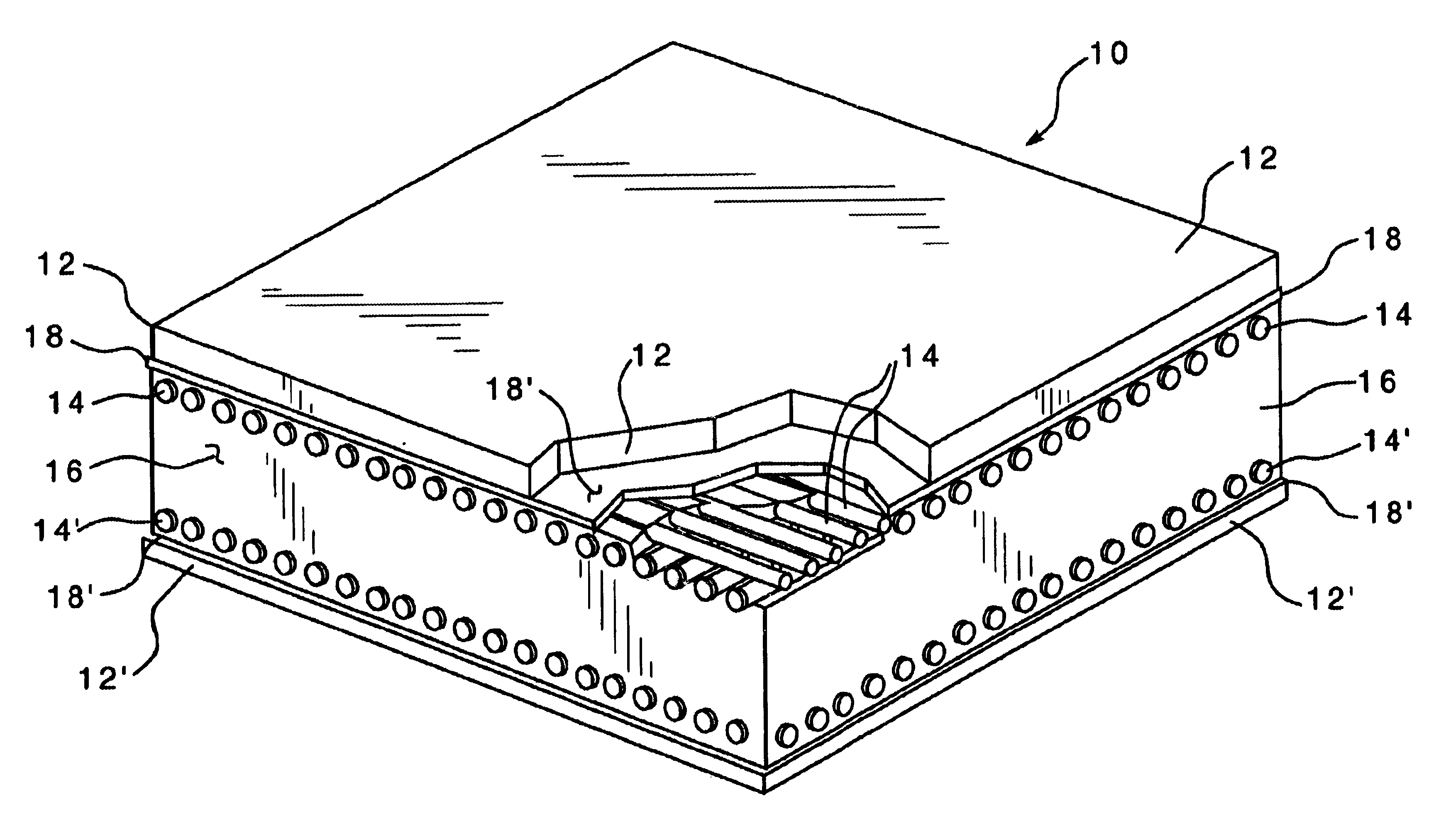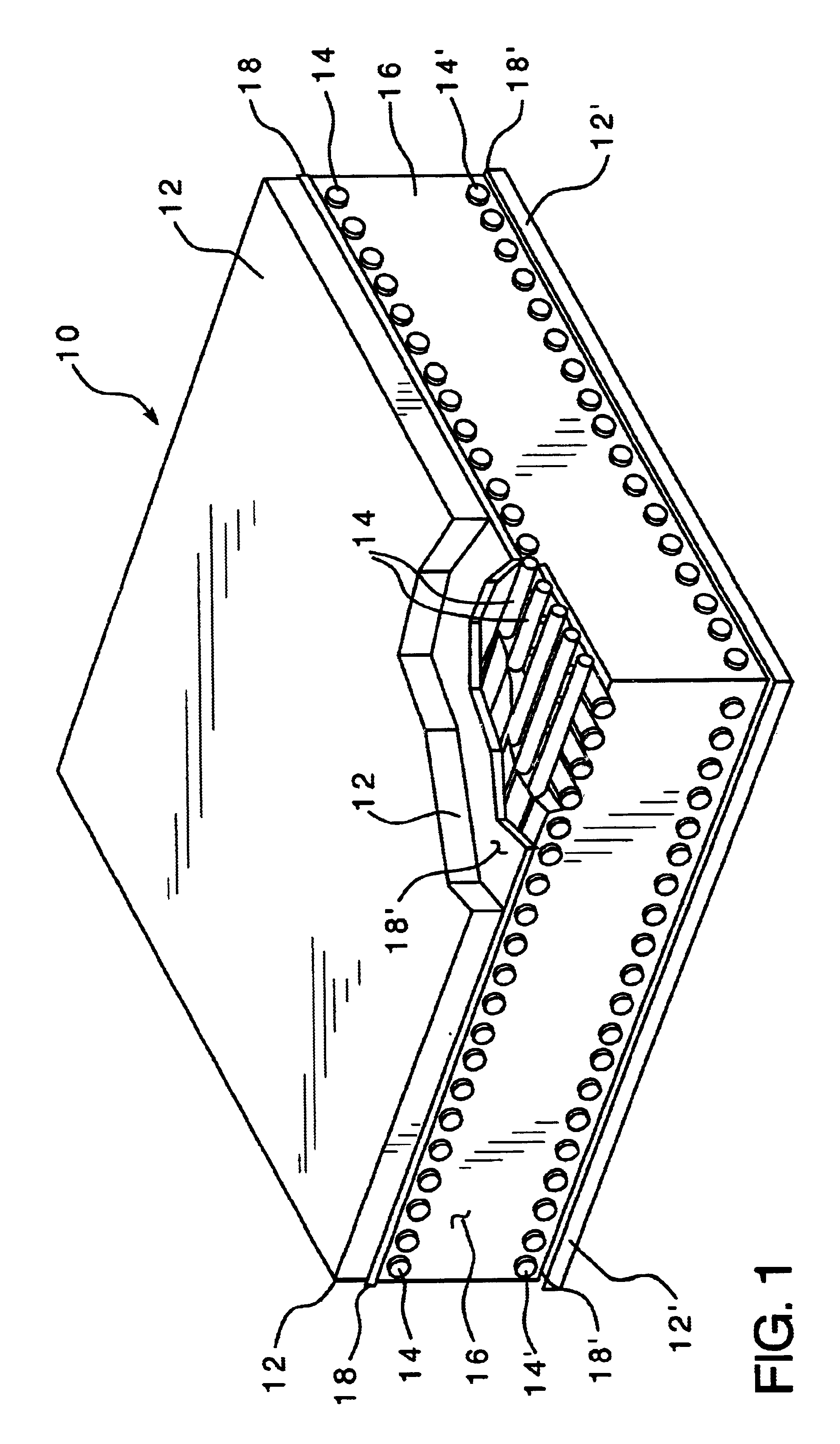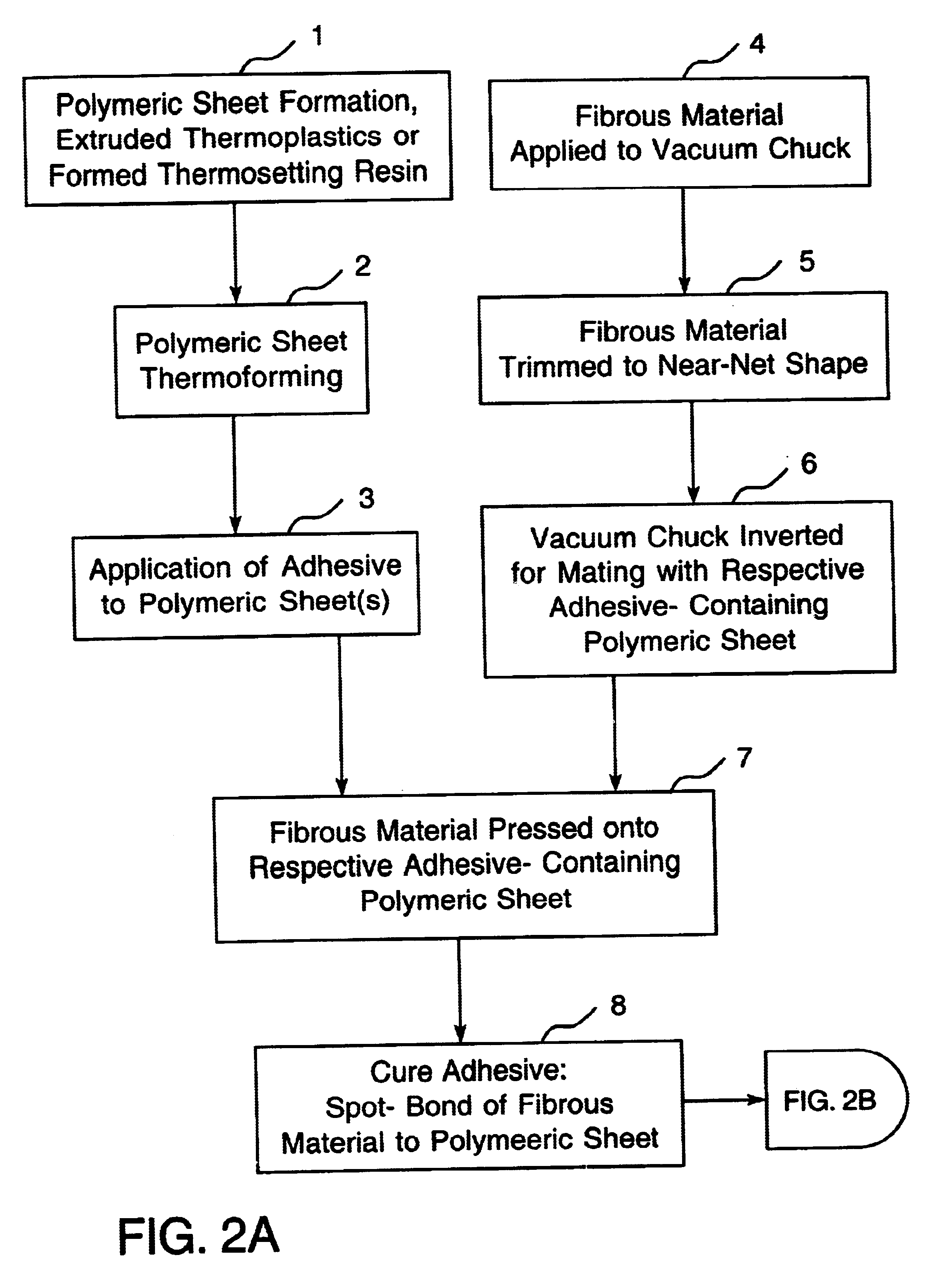System and method of forming composite structures
a composite structure and composite material technology, applied in the field of system and method of forming composite structures, can solve the problems of relative viscosity core materials that cannot rapidly and fully penetrate or impregnate fibrous layers, prior art composite structures tend to be relatively weaker than otherwise desired, and can not rapidly and fully fill cavity cavities
- Summary
- Abstract
- Description
- Claims
- Application Information
AI Technical Summary
Benefits of technology
Problems solved by technology
Method used
Image
Examples
Embodiment Construction
of the Polymeric Core Material
The process for producing a preferred embodiment of the polymeric core material 16 of the present invention comprises forming a polyurethane foam including:
i. Contacting a polyol mixture, an isocyanate, a blowing agent, and a catalyst to produce a reaction; and
ii. Expanding the reaction mixture to produce the polyurethane foam.
The first step in the process of the invention comprises provision of a reaction mixture comprising a polyol mixture, an isocyanate, a blowing agent, and a catalyst. As will be readily understood by one skilled in the pertinent art, the polyol mixture can be a single polyol, or can be a blend of two or more polyols. The exact chemical nature of each polyol is not particularly restricted. For example, the polyol can be made with one or both of ethylene oxide and propylene oxide, and may be a random or block polymer of one or more of polyoxypropylene diols, triols and tetrols, and ethylene oxide-capped diols, triols and tetrols. Gen...
PUM
| Property | Measurement | Unit |
|---|---|---|
| temperature | aaaaa | aaaaa |
| temperature | aaaaa | aaaaa |
| boiling point | aaaaa | aaaaa |
Abstract
Description
Claims
Application Information
 Login to View More
Login to View More - R&D
- Intellectual Property
- Life Sciences
- Materials
- Tech Scout
- Unparalleled Data Quality
- Higher Quality Content
- 60% Fewer Hallucinations
Browse by: Latest US Patents, China's latest patents, Technical Efficacy Thesaurus, Application Domain, Technology Topic, Popular Technical Reports.
© 2025 PatSnap. All rights reserved.Legal|Privacy policy|Modern Slavery Act Transparency Statement|Sitemap|About US| Contact US: help@patsnap.com



